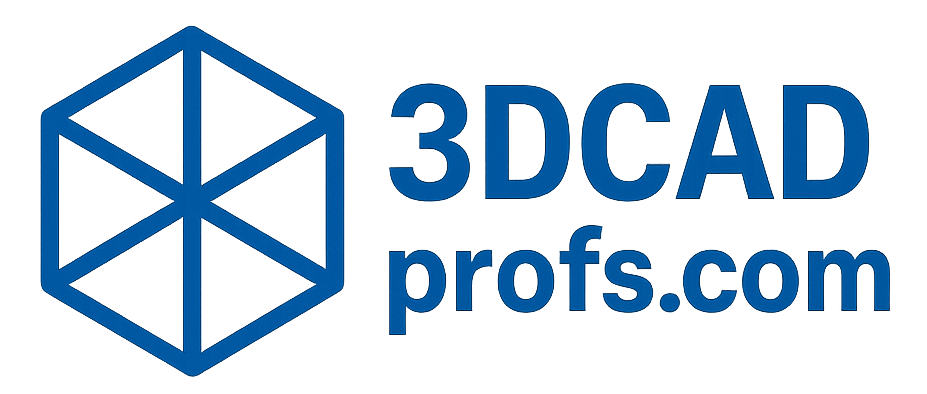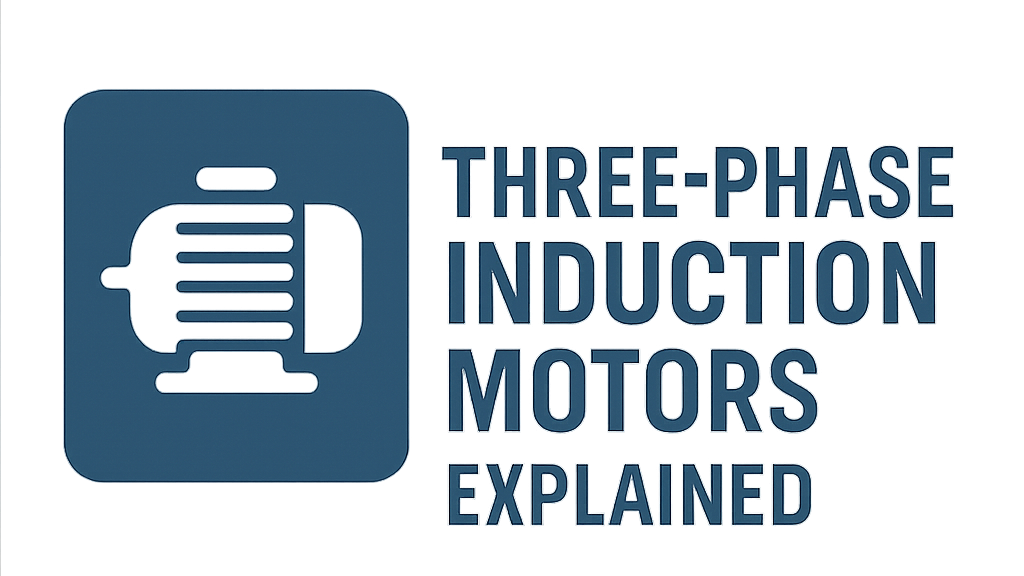Three Phase Induction Motors Explained
The Workhorse of Modern Industry (Expanded)
The Unseen Power: Three-Phase Induction Motors
Three-phase induction motors are the most widely used electric motors in industrial and commercial applications. Their robust construction, reliability, and cost-effectiveness make them the backbone of countless machines and processes. From powering massive factory equipment to driving essential pumps and fans, these motors convert electrical energy into mechanical energy with remarkable efficiency. This expanded guide explores their fundamental working principles, components, types, starting methods, protection, applications, specifications, and maintenance.
How They Work: The Magic of Induction
The operation of a three-phase induction motor is based on the principle of electromagnetic induction:
- Rotating Magnetic Field (RMF): When a three-phase AC supply is connected to the stator windings (spaced 120 electrical degrees apart), it produces a magnetic field that rotates at synchronous speed.
- Induced Current in Rotor: This rotating magnetic field cuts through the rotor conductors (bars or windings), inducing a current in them according to Faraday’s law of induction.
- Torque Production: The interaction between the stator’s RMF and the rotor’s current-carrying conductors creates a torque, causing the rotor to rotate in the direction of the RMF, but at a slightly slower speed (slip speed).
The difference between the synchronous speed of the RMF and the actual rotor speed is known as “slip”.
Simplified Rotating Magnetic Field (RMF)
Illustrative RMF effect on rotor.
Key Components
Stator
The stationary part, with a laminated steel core and slots for three-phase windings. Creates the RMF.
Rotor
The rotating part. Either “squirrel cage” (conductive bars) or “wound rotor” (insulated windings).
Enclosure
Protects internal parts. Types include TEFC (Totally Enclosed Fan Cooled) and ODP (Open Drip Proof).
Bearings
Support the rotor shaft for smooth rotation. Typically ball or roller bearings.
Cooling Fan
Mounted on the shaft to dissipate heat, often external in TEFC motors.
Terminal Box
Houses terminals for connecting to the three-phase power supply.
Main Types & Specifics
Squirrel Cage Induction Motor
Most common; rotor bars short-circuited by end rings.
NEMA Designs (North America):
- Design A: Normal starting torque, high starting current, low slip.
- Design B: Normal starting torque, normal starting current, normal slip (most common).
- Design C: High starting torque, normal starting current, normal slip (for hard-to-start loads).
- Design D: Very high starting torque, low starting current, high slip (e.g., hoists, punch presses).
IEC Designs (International):
- Design N: Normal starting torque, normal starting current (similar to NEMA B).
- Design H: High starting torque, normal starting current (similar to NEMA C).
Wound Rotor (Slip Ring) Motor
Rotor has insulated windings connected to external resistors via slip rings for starting/speed control.
Key Features & Applications:
- High Starting Torque: By increasing rotor resistance externally.
- Low Starting Current: Compared to DOL squirrel cage motors for high torque.
- Limited Speed Control: Achieved by varying rotor resistance, but inefficient.
- Applications: Cranes, hoists, conveyors, crushers, mills, where high starting torque or controlled acceleration is needed.
Starting Methods
Various methods are used to start three-phase induction motors, mainly to limit high inrush currents.
Direct On-Line (DOL)
Motor connected directly to supply. Simple, low cost. High starting current. Used for smaller motors.
Star-Delta (Wye-Delta)
Motor started in star connection, then switched to delta. Reduces starting current and torque to ~1/3.
Autotransformer
Uses a tapped autotransformer to supply reduced voltage during starting. More expensive, flexible torque control.
Soft Starter (Electronic)
Uses thyristors to gradually increase voltage. Smooth start, reduced mechanical stress, adjustable parameters.
Variable Frequency Drive (VFD)
Provides full control over motor speed and torque from start to full speed. Most flexible, energy-efficient, but highest initial cost.
Rotor Resistance (Wound Rotor)
External resistors in rotor circuit limit starting current and increase starting torque. Gradually cut out as motor speeds up.
Protection and Control Aspects
Motor Protection
- Overload Protection: Prevents damage from excessive current due to mechanical overload. (Thermal relays, electronic overload relays).
- Short Circuit Protection: Protects against high fault currents. (Fuses, Motor Circuit Breakers – MCBs/MCCBs).
- Phase Failure/Imbalance: Detects loss of a phase or unequal phase voltages, which can damage the motor.
- Under/Over Voltage: Protects against supply voltage deviations.
- Ground Fault Protection: Detects current leakage to ground.
- Thermal Protection: Embedded thermistors or RTDs in windings to detect overheating directly.
Motor Control
- Contactors & Relays: Used for basic start/stop operations and DOL/Star-Delta starting logic.
- Programmable Logic Controllers (PLCs): For automated control sequences, interlocking, and integration into larger systems.
- Variable Frequency Drives (VFDs): Provide precise speed control, energy savings, soft starting/stopping, and advanced motor protection features.
- Motor Management Relays: Combine protection, control, and monitoring functions in one device.
Advantages & Disadvantages
Advantages
- Simple and rugged construction.
- High reliability and low maintenance (especially squirrel cage).
- Relatively low cost.
- Self-starting.
- Good efficiency, especially at or near full load.
- Can operate in harsh environments.
Disadvantages
- Speed is not easily varied without additional equipment (VFDs).
- Low starting torque for standard squirrel cage designs.
- Draws high starting current (typically 5-8 times full load current) if DOL started.
- Operates with a lagging power factor (requires power factor correction).
- Efficiency drops significantly at light loads.
In-Depth Applications Across Industries
Manufacturing & General Industry
Machine tools (lathes, milling machines, grinders), conveyors, mixers, presses, packaging machinery, textile machines.
Mining, Minerals & Aggregates
Large conveyors, crushers (jaw, cone, gyratory), grinding mills (ball, SAG), pumps for slurry and dewatering, ventilation fans.
Water & Wastewater Treatment
Centrifugal pumps for water supply and distribution, submersible pumps, aerators, mixers, blowers for activated sludge processes.
HVAC & Building Services
Fans and blowers for air handling units (AHUs), chiller compressors, cooling tower fans, pumps for heating and cooling circuits.
Oil & Gas / Petrochemical
Pumps for crude oil and refined products, compressors, fans for cooling towers and process air, mixers in reactors.
Key Technical Specifications & Formulas
Important Specifications
- Rated Power (kW or HP): Output power the motor can deliver.
- Rated Voltage (V) & Frequency (Hz): Supply parameters.
- Number of Poles (P): Determines synchronous speed.
- Full Load Speed (RPM): Actual rotor speed at rated load.
- Full Load Current (A) / Starting Current (A).
- Efficiency (%): Ratio of output mechanical power to input electrical power.
- Power Factor (cos φ): Measure of how effectively electrical power is converted into useful work.
- Frame Size: Standardized physical dimensions.
- IP Rating (Ingress Protection): Protection against solids and liquids.
- Insulation Class (e.g., F, H): Temperature withstand capability of windings.
- Duty Cycle (e.g., S1 continuous).
Key Formulas
(where f = frequency, P = number of poles)
(where Nr = rotor speed)
(VL=Line Voltage, IL=Line Current, Eff.=Efficiency)
Maintenance Details for Longevity
Proper maintenance ensures reliability and extends motor life.
- Routine Inspections: Visually check for loose connections, dirt/dust buildup, unusual noises, and signs of overheating. Check cooling fan operation.
- Lubrication: Follow manufacturer’s schedule for greasing bearings. Use correct type and amount of grease. Over-greasing can be as harmful as under-greasing.
- Winding Tests: Periodically perform insulation resistance tests (Megger test) to check winding health. Surge testing can detect early turn-to-turn faults.
- Vibration Analysis: Regular monitoring can detect bearing wear, misalignment, or imbalance before catastrophic failure.
- Cleaning: Keep motor clean, especially cooling fins, to ensure proper heat dissipation.
- Alignment: Ensure proper alignment between motor and driven equipment to prevent premature bearing failure and excessive vibration.
- Bolt Tightness: Check terminal box connections and mounting bolts periodically.
Typical Performance: Efficiency vs. Load
Induction motors are most efficient when operating near their rated load. This chart shows an illustrative efficiency curve.
Note: Actual curves vary by motor design and size.
The Enduring Workhorse of Industry
Three-phase induction motors are fundamental to modern industrial society. Their blend of simplicity, robustness, and cost-effectiveness has made them indispensable. Even with advancements in motor technology, their reliability and suitability for a vast range of applications ensure they will continue to power the world for years to come. Understanding their operation, types, protection, and maintenance is crucial for engineers, technicians, and anyone involved with industrial machinery.

